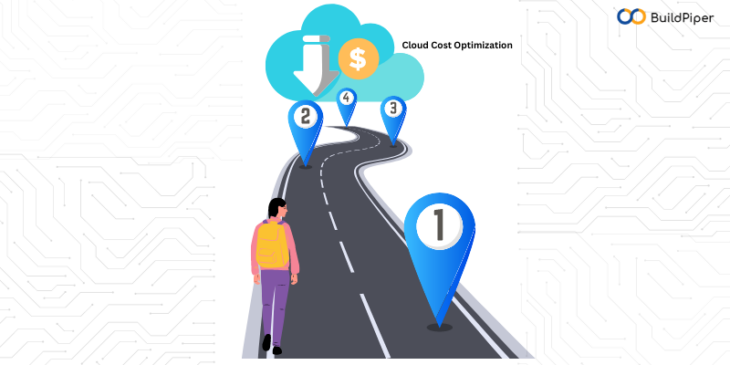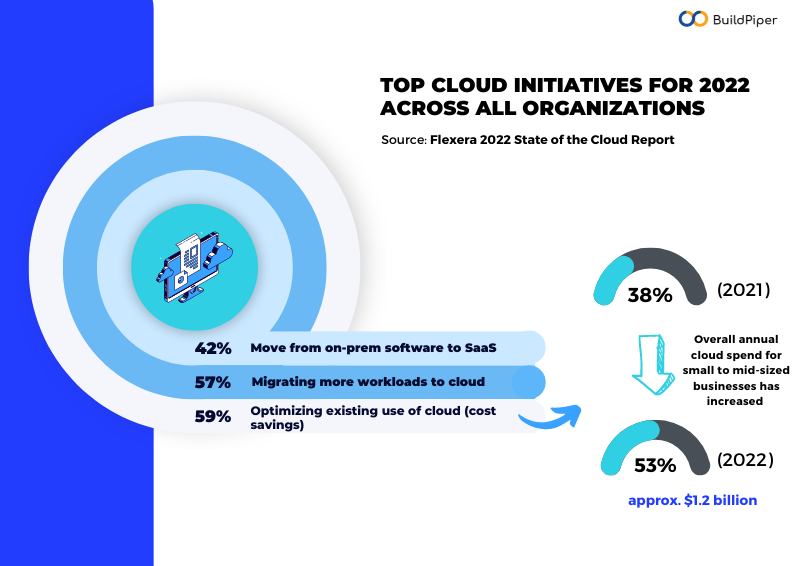
In a survey conducted with over 750 enterprises, 30% of them felt their cloud spend was wasteful and 80% felt managing their cloud spend is challenging.

Adopting cloud computing gives you a lot of advantages, say scalability, flexibility, ease of access to information, makes collaboration easier across different geographies, etc. Yet, all doesn’t go as planned, when organizations actually migrate their workloads to the cloud. The reason is – Organizations simply lift and shift the applications they were utilizing on their local data center (on-premise) to a cloud infrastructure.
As a result, organizations face multiple challenges, and most importantly they don’t actually experience real business agility. All because they thought that these applications will work in a similar way on the cloud. Of all the challenges, cloud cost optimization is a major one.
In fact, many enterprises are surprised to notice that their costs have gone up instead of down. Here, organizations need to understand that they need to deploy cloud computing the right way. This not only paves the way for the actual digital transformation but is even instrumental in cloud cost management.
Challenges to Cloud Optimization
Many organizations face significant challenges when it comes to lowering the cost of cloud spend, such as:
- Complex and multifaceted pricing structures
- Extreme cloud bill detail
- Ease of cloud service provisioning
- Continuous modifications to cloud offerings
- Excessive alternative architectures
- Inconsistency across cloud platforms (in the case of multi-cloud providers)
Popular advice on cloud cost management comprises tasks like – turning off unused instances and deleting unused storage. These practices are not always apt for every organization. For instance, turning off unused instances might entail disruption and shadow IT i.e., can lead to utilizing unauthorized technology without the knowledge of their IT department.
Not denying the fact that it can’t be a great money saver option if unused/idle instances are turned off, but beware before doing so. Some instances might appear oversized but are purposefully configured to give additional support in terms of memory or other reasons.
Despite everything, organizations need to frame a strategic approach to cloud cost management.
Core Principles of Cloud Cost Optimization
Before applying the cost-saver option – “only pay for what you use,” we need to establish how much we use. Simply put, saving cloud costs is fine as long as it’s not jeopardizing your critical application performance. We can ensure this by evaluating whether our applications are receiving the exact resource support to deliver on their SLAs, within our cost-effective measures. The first step is to create a plan.
Create a Plan
For beginners, we need to set clear expectations. For that, we need to go through the following steps:
- Forecast your consumption and frame budget expectations to stay within that forecast.
- Organizations are required to run processes before deploying applications, workloads, and projects on the cloud.
- CCoE (Cloud Center of Excellence) should define the criteria to identify the exact outcomes that impact cloud services design. This even prevents over-engineering applications. For that to happen, they need to lay down all the questions, and assumptions, and gain a comprehensive understanding of what each application is accomplishing.
- Collaborating with the product owners and stakeholders to learn the value each of these application offer the organization. And also define the key metrics for the utilization of specific architectural principles.
Questions to determine the Workload Requirements
- What level of data sensitivity does the workload handle?
- What will happen if the data remains unavailable for a certain period of time or gets lost/deleted?
- Does this application need service-level objectives?
- What is the intended performance target?
- Does the data need to adhere to any industry-specific rules, like HIPAA?
Some Core Principles and Essential Capabilities to accomplish them
Multidimensional Rightsizing with Application awareness:
Whether it’s running on containers, IaaS, or other services, we need to understand what applications consume – their underlying resources across computing, storage, and network for optimal performance.
Vertical and Horizontal Scale Decisions in Real-time:
Understanding application SLAs and ensuring that the resources are performing continuously within the restrictions of the constraints and policies defined by the business (i.e., made on the basis of cost-cutting measures). Dynamic scaling of resources in accordance with application demand, ensuring you only pay for extra cloud resources during peak hours.
Identify and Delete Unused resources:
Ensure no instances sit idle. Compute instances, load balancers, storage volumes, snapshots, and many other cloud resources can be easily created and forgotten. Identify those unnecessary instances and plan how to delete them in accordance with the company’s data retention policies.
Working on the Right Pricing Models for your workloads:
Discounted pricing models like reserved instances, AWS saving plans, and spot instances can bring down cloud costs significantly. We need a detailed analysis to understand which of our applications and workloads can work on these discounted pricing models.
Upgrade Instance Generation:
Cloud providers upgrading their computer platforms over the years, provide renewed power in certain use cases. Often less expensive and more efficient than previous generations, you might want to update across instance families to generate the same performance in a smaller size.
Align with work cycles:
Schedule workload suspensions to ensure that when people aren’t using them, they aren’t paying for them. By planning cloud services based on these anticipated patterns, waste can be reduced. If we describe it with a “duty schedule” tag, where any cron-like scheduler, can then read the value of the tag and schedule services appropriately.
Best Practices For Cloud Cost Optimization
Identify Stakeholders
For the successful implementation of cloud cost optimization tactics, we need the participation of every stakeholder. Some stakeholders to consider include:
- Managers
- Product owners
- DevOps
- Finance department
- CCoE (Cloud Center of Excellence)
Implement Accountability
Although IT and financial departments have had separate goals for a long time, now IT needs to be accountable for its budget. To begin with, we can have chargeback models to calculate and charge based on unit costs to help increase accountability. It even ensures costs are a part of every department. Additionally, it’s a good idea to increase awareness and help lower costs.
Building and Maintaining Dashboards
Essential activities to keep you on top of cloud spending – through building and maintaining dashboards and preparing reports. The reports contain:
- Top and least spenders (department or groups in an organization)
- Trending daily, monthly, quarterly, and annual patterns of cloud costs incurred
- Actual versus planned spending on cloud
- Overall spending from each department
- Estimated spending waste (unutilized cloud resources)
This helps in forming expected patterns. For organizations to be able to slice and dice data by resource and by teams, as well as by features and services. Any deviations faced in any particular month or quarter get highlighted and awareness is built.
Utilize Cloud Cost OptimizationTools
Cloud cost visibility is an integral part of every cost optimization decision. So we need tools to enable visibility like:
- Dashboard visualization
- Heat maps
- Cloud cost intelligence
- Container cost optimization
While we are talking about data visualization and transparency, we must keep in mind that too much of anything is harmful. And so does more data or all data.
When selecting a cloud cost optimization tool, ensure that its capability extends beyond general data capture and includes data sorting and serving.
It’s worth understanding what type of data is useful to which group. An intuitive platform does a better job of not just capturing data but also serving it around rightly.
Summing Up…
With these measures, IT and cloud operations teams can start working on optimizing their cloud implementations. Though somewhere down the line organizations find that the efforts required are more complicated than they’ve anticipated. It is when they realize – “to err is human” can cause huge losses. Organizations need to step up their efforts and ensure these practices are recurring, and to fine-tune these processes automation comes into play. For all the optimization strategies to work in tandem, we need an intuitive setup to ensure nothing gets missed and everything is addressed. An end-to-end microservice delivery platform can surely be considered for the building and maintenance of these processes.
Ultimately, it’s about creating the ideal business model and unlocking new business opportunities. We’re talking about turning price into a competitive advantage to help you outpace competitors.



